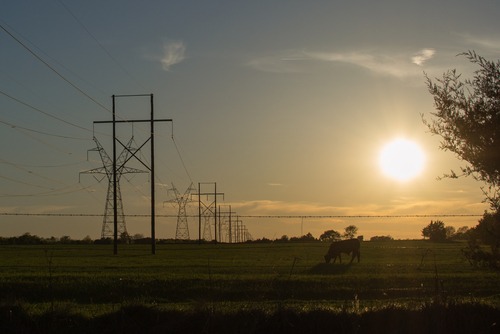NETL report examines capacity demands of ERCOT grid in Texas

The near-collapse of the Texas energy grid due to the winter storm in February highlights the importance of the work being done by the National Energy Technology Laboratory’s (NETL) Energy Markets Analysis Team (EMAT).
EMAT — which is charged with conducting analyses to help utilities prepare for changing conditions and recover from disruptions – released a report last spring called “2020 Summer Resource Adequacy in the ERCOT Region.” ERCOT is the Electric Reliability Council of Texas, which runs the grid in Texas. The analysis in the EMAT report found that anticipated reserve margins of the power system were below levels set by ERCOT leadership.
Reserve margin is capacity minus demand, where “capacity” is the expected maximum available supply, and “demand” is expected peak demand less demand response. For instance, a reserve margin of 15 percent means an electric system has enough spare capacity to cover system contingencies up to an effective 15 percent of expected average peak demand. The EMAT report found that ERCOT’s anticipated reserve margin was only 10.7 percent for summer 2020, which was well below the target reserve margin of 13.75 percent set by the ERCOT Board of Directors.
“Although our study reviewed ERCOT’s ability to meet demand during a summer heatwave, we believe the issues we identified played significant roles in the events that occurred last month when Texas was hit with a record winter storm, which reduced its ability to deliver electricity to the more than 25 million people it serves when demand spiked,” John Brewer, an engineer for EMAT, said.
The February 2021 storm brought the grid in Texas “precariously close to a complete blackout,” said NETL. To avert that, ERCOT ordered rolling outages that plunged much of the state into darkness while electricity prices skyrocketed. “Assurances that the power infrastructure was prepared to endure harsh winter conditions proved false. Power plants were knocked offline, and pumps used to produce the natural gas needed to fuel them froze over,” NETL officials said.
The EMAT report said ERCOT could make it through the summer season without a loss of load event if the weather remained normal. However, if demand reached previous peak levels, ERCOT was likely to operate in emergency conditions during the summer peak. The conditions during the February storm exceeded even the most severe conditions simulated by NETL researchers for summer 2020.
“The global energy ecosystem must be prepared for and adapt to changing conditions and have the ability to withstand and recover rapidly from disruptions,” Brewer said. “That’s why NETL carefully studies how shifts in the power generation resource mix impact many facets of grid operations, analyzes the reliability of power systems, and reviews existing grid architecture and energy market policies. With this knowledge, we can help guide technology research and development and advise industry in preparing for and adapting to changing conditions, in hopes of preventing disruptions from occurring in the future and minimizing impacts when they do.”
